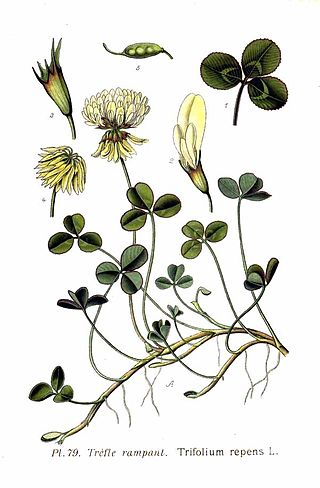
Clover, also called trefoil, are plants of the genus Trifolium, consisting of about 300 species of flowering plants in the legume family Fabaceae originating in Europe. The genus has a cosmopolitan distribution with highest diversity in the temperate Northern Hemisphere, but many species also occur in South America and Africa, including at high altitudes on mountains in the tropics. They are small annual, biennial, or short-lived perennial herbaceous plants, typically growing up to 30 centimetres (12 in) tall. The leaves are trifoliate, with stipules adnate to the leaf-stalk, and heads or dense spikes of small red, purple, white, or yellow flowers; the small, few-seeded pods are enclosed in the calyx. Other closely related genera often called clovers include Melilotus and Medicago.

Scabiosa is a genus in the honeysuckle family (Caprifoliaceae) of flowering plants. Many of the species in this genus have common names that include the word scabious, but some plants commonly known as scabious are currently classified in related genera such as Knautia and Succisa; at least some of these were formerly placed in Scabiosa. Another common name for members of this genus is pincushion flowers.

Linaria is a genus of almost 200 species of flowering plants, one of several related groups commonly called toadflax. They are annuals and herbaceous perennials, and the largest genus in the Antirrhineae tribe of the plantain family Plantaginaceae.

Alcea is a genus of over 80 species of flowering plants in the mallow family Malvaceae, commonly known as the hollyhocks. They are native to Asia and Europe. The single species of hollyhock from the Americas, the streambank wild hollyhock, belongs to a different genus.
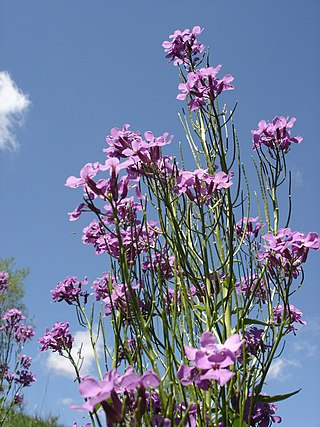
Hesperis is a genus of flowering plants in the family Brassicaceae. Most are native to Eurasia, with several endemic to Greece and Turkey. Many plants of this genus bear showy, fragrant flowers in shades of purple and white. One of the more widely known species is the common garden flower Hesperis matronalis. The genus name Hesperis was probably given because the scent of the flowers becomes more conspicuous towards evening.

Reseda, also known as the mignonette, is a genus of fragrant herbaceous plants native to Europe, southwest Asia and North Africa, from the Canary Islands and Iberia east to northwest India. The genus includes herbaceous annual, biennial and perennial species 40–130 cm tall. The leaves form a basal rosette at ground level, and then spirally arranged up the stem; they can be entire, toothed or pinnate, and range from 1–15 cm long. The flowers are produced in a slender spike, each flower small, white, yellow, orange, or green, with four to six petals. The fruit is a small dry capsule containing several seeds.

Petrorhagia is a small genus of annual and perennial plants of the family Caryophyllaceae, mostly native to the Mediterranean region. It is low-growing with wiry stems and narrow, grass-like leaves. The flowers are small, in clusters similar to members of the genus Dianthus, in pink, lilac, or white. Petrorhagia saxifraga is the tunic flower or coat flower, similar to baby's breath, but shorter, and used in rock gardens.

Pierre Edmond Boissier was a Swiss prominent botanist, explorer and mathematician. He was the son of Jacques Boissier (1784-1857) and Caroline Butini (1786-1836), daughter of Pierre Butini (1759-1838) a well-known physician and naturalist from Geneva. With his sister, Valérie Boissier (1813-1894), he received a strict education with lessons delivered in Italian and Latin. Edmond's interest in natural history stemmed from holidays in the company of his mother and his grandfather, Pierre Butini at Valeyres-sous-Rances. His hikes in the Jura and the Alps laid the foundation of his zest for later exploration and adventure. He attended a course at the Academy of Geneva given by Augustin Pyramus de Candolle.
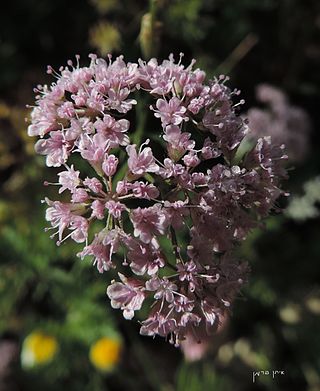
Chaetosciadium is a monotypic genus of flowering plants in the family Apiaceae. Its only species is Chaetosciadium trichospermum. the only species of the genus Chaetosciadium. It is native to Iraq, Lebanon, Syria, Palestine and Saudi Arabia. It is common in Israel.
Trigonosciadium is a genus in the family Apiaceae. Trigonosciadium brachytaenium is endemic to Iran, whereas T. tuberosum and T. viscidulum grow in Iran, Anatolia and Iraq.
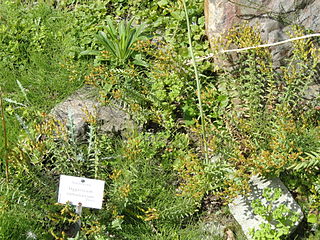
Hypericum rumeliacum is a species of flowering plant in the family Hypericaceae, native to southeastern Europe.
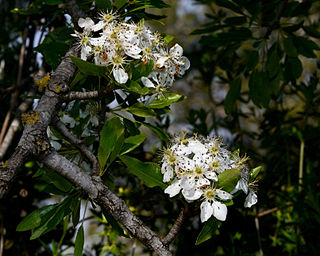
Pyrus syriaca is a deciduous tree in the Rosaceae family. It is referred to by the common name Syrian pear. It is the only pear species which grows in the wild in Lebanon, Turkey, Syria and Israel.

Acanthophyllum is a genus of flowering plants in the family Caryophyllaceae with about 75 species, spread in the Irano-Turanian area.

Tordylium is a genus of flowering plants in the carrot family (Apiaceae). Members of the genus are known as hartworts.
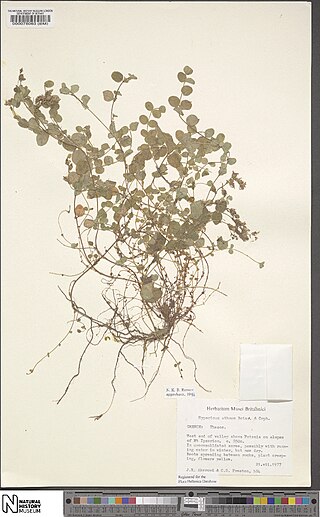
Hypericum athoum is a perennial herb in the Hypericaceae family. It is endemic to Greece.
Hypericum pubescens is a perennial herb in the Hypericaceae family. It is in the section Adenosepalum.
Hypericum polyphyllum is a species of flowering plant in the family Hypericaceae which is native to Turkey, Lebanon, and Syria.

Hypericum cardiophyllum is a species of flowering plant in the family Hypericaceae which is endemic to Turkey, Lebanon, and Syria.

Conopodium is a genus of flowering plants belonging to the family Apiaceae.
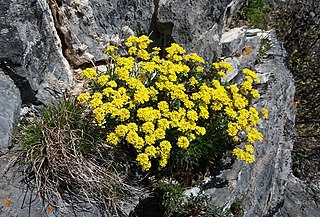
Odontarrhena is a large genus of flowering plants in the family Brassicaceae. They were originally a separate genus and then were amalgamated into the Alyssum genus, but then morphological and molecular evidence has reseperated them. Some of the genera are nickel (Ni) hyperaccumulators.

















